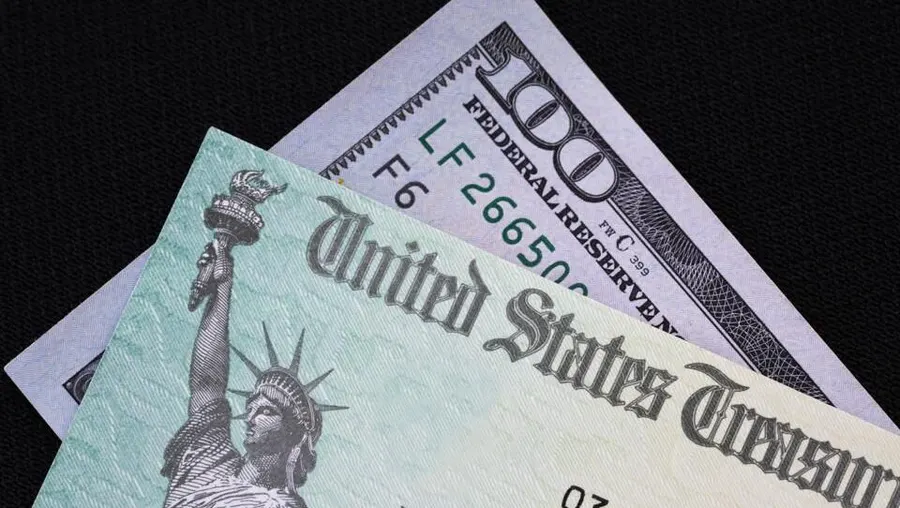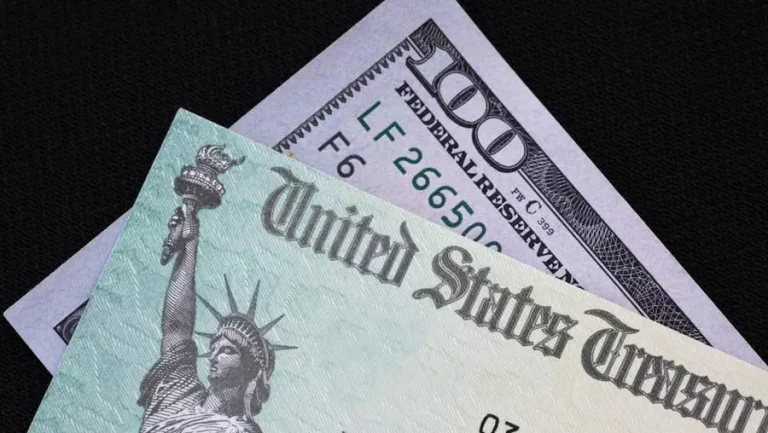How to Apply for A Guaranteed Stimulus Check?
If you’re eligible for a stimulus check, applying for one can provide significant financial relief during difficult times. However, the process of applying for a stimulus check can be confusing, especially if you’re not familiar with the eligibility criteria and application process.
In this article, we’ll provide you with a step-by-step guide on how to apply for a stimulus check, including the documents you’ll need, deadlines, and common mistakes to avoid.
To be eligible for a stimulus check, you must meet certain criteria, such as having a Social Security number, being a U.S. citizen or resident alien, and meeting income requirements. Once you’ve determined your eligibility, you must gather the necessary documents, such as your Social Security number and tax return information. The application process varies depending on whether you’re filing a tax return or using the non-filer tool, so it’s important to understand the process that applies to your situation.
After you’ve submitted your application, it’s important to keep track of the status of your stimulus check and understand what to do if you encounter any issues. In this article, we’ll provide you with the information you need to successfully apply for a stimulus check and receive the financial support you need during challenging times.
Key Takeaways
- To apply for a stimulus check, you must meet eligibility criteria and gather necessary documents.
- The application process varies depending on whether you’re filing a tax return or using the non-filer tool.
- After submission, it’s important to keep track of the status of your stimulus check and understand what to do if you encounter any issues.
Eligibility Criteria
To be eligible for a stimulus check, you must meet certain criteria set forth by the government. Here are the requirements you need to fulfill to receive a stimulus check:
Income
Your income is one of the most important factors in determining your eligibility for a stimulus check.
If you are a single filer with an adjusted gross income (AGI) of up to $75,000, you are eligible for the full amount of the stimulus check.
If you are a married couple filing jointly and your AGI is up to $150,000, you are also eligible for the full amount.
If your income is higher than the above mentioned, the amount of the stimulus check you receive will be reduced. If you are a single filer with an AGI between $75,000 and $80,000, or a married couple filing jointly with an AGI between $150,000 and $160,000, you will receive a reduced amount. If your AGI is above these limits, you will not be eligible for a stimulus check.
Dependents
If you have dependents, you may be eligible for additional funds. If you have a child who is under the age of 17, you will receive an additional $500 per child. However, if your child is over the age of 17, you will not receive any additional funds.
Citizenship
To receive a stimulus check, you must be a U.S. citizen, a U.S. national, or a resident alien. If you are a nonresident alien, you will not be eligible for a stimulus check.
Tax Filing Status
If you filed a tax return for 2019 or 2020, you will automatically receive a stimulus check if you are eligible. If you did not file a tax return for either year, you may still be eligible for a stimulus check if you receive Social Security benefits, Railroad Retirement benefits, or veterans’ benefits. In this case, you will need to use the non-filers tool on the IRS website to provide your information and receive your stimulus check.
By meeting the eligibility criteria, you can apply for a stimulus check and receive the financial assistance you need during these challenging times.
Documents Required
To apply for the stimulus check, you will need to provide certain documents to prove your eligibility. Here is a list of documents that you may need to submit:
- Social Security Number (SSN) or Individual Taxpayer Identification Number (ITIN): You will need to provide your SSN or ITIN to confirm your identity and eligibility.
- 2019 or 2020 Tax Return: If you filed a tax return for either year, you do not need to take any additional action to receive the stimulus check. The IRS will use your tax return information to determine your eligibility and send you the payment.
- Non-Filer Form: If you did not file a tax return for 2019 or 2020, you may still be eligible for the stimulus check. In this case, you will need to fill out the Non-Filer Form on the IRS website to provide your personal and financial information.
- Proof of Income: If you are eligible for the stimulus check based on your income, you may need to provide proof of your income. This can include a W-2 form, 1099 form, or other income documents.
- Proof of Dependents: If you have dependents who are eligible for the stimulus check, you will need to provide proof of their identity and relationship to you. This can include birth certificates, adoption papers, or other legal documents.
It is important to note that the documents required may vary depending on your individual situation. You should check the IRS website or consult with a tax professional to determine exactly what documents you need to provide. Additionally, make sure that all of the information you provide is accurate and up-to-date to avoid any delays or issues with receiving your stimulus check.
Application Process

To apply for a stimulus check, you have three options: online, mail, or in-person application.
Online Application
The online application process is the quickest and easiest option. To apply online, you will need to visit the official website of the Internal Revenue Service (IRS) and use the “Get My Payment” tool. You will need to provide your Social Security number, date of birth, and mailing address. The tool will then guide you through the application process and let you know if you are eligible for a stimulus check.
Mail Application
If you prefer to apply by mail, you will need to download and fill out the “Economic Impact Payment” form from the IRS website. Once you have completed the form, you will need to mail it to the IRS at the address provided on the form. It is important to make sure that you provide accurate information and sign the form before mailing it.
In-Person Application
If you need assistance with your application, you can visit an IRS Taxpayer Assistance Center in person. You will need to bring a valid photo ID, your Social Security card, and any other relevant documents. A representative will help you complete the application process and answer any questions you may have.
Regardless of which application method you choose, it is important to make sure that you provide accurate information and follow the instructions carefully. By doing so, you can ensure that your application is processed quickly and that you receive your stimulus check as soon as possible.
Deadlines and Timelines
To receive your stimulus check, you must be aware of the deadlines and timelines set by the IRS. The deadlines for claiming the Economic Impact Payments (EIPs) vary depending on your situation.
Filing a Tax Return
If you are required to file a tax return, you must file it before the deadline to claim your EIP. The deadline for filing your 2020 tax return is May 17, 2021, and the deadline for filing your 2021 tax return is April 15, 2022. If you miss these deadlines, you may still be eligible to claim the Recovery Rebate Credit (RRC) on your tax return.
Non-Filers
If you are not required to file a tax return, you can still receive the stimulus check. You can use the Non-Filers tool on the IRS website to provide your information and receive your payment. The deadline for using the Non-Filers tool for the first and second EIPs has passed. However, you can still use the tool to claim the RRC for tax year 2020 until May 17, 2024, and for tax year 2021 until April 15, 2025.
Direct Deposit and Mailed Checks
If you have already filed your tax return and provided your direct deposit information, you should receive your payment faster than those who receive a mailed check. The IRS has stated that it will take up to five days to process direct deposit payments and up to four weeks to process mailed checks. If you have not received your payment within the given timeframe, you can use the Get My Payment tool on the IRS website to track your payment status.
It is important to note that the timelines and deadlines may change depending on the IRS’s decisions. Therefore, it is recommended to check the IRS website regularly for updates and changes to the deadlines and timelines.
After Submission
After submitting your application for a stimulus check, you may be wondering what happens next. Here are some important things to keep in mind:
Application Tracking
Once you have submitted your application, you may want to track its progress. The Internal Revenue Service (IRS) provides a tool called “Get My Payment” that allows you to check the status of your payment. However, this tool is only available for a limited time after the payment is issued. If you are unable to use the tool or if you have any other questions about your payment, you can contact the IRS directly.
Receiving Payment
If your application is approved, you will receive your stimulus check in the form of a direct deposit, paper check, or debit card. The method of payment will depend on the information you provided on your application. It is important to note that it may take some time to receive your payment, as the IRS may need to verify your information before issuing the payment.
Once you receive your payment, it is important to use it responsibly. You may want to consider using the money to pay bills, save for emergencies, or invest in your future. It is also important to be aware of any scams related to stimulus checks, as scammers may try to take advantage of the situation.
Overall, the process of applying for and receiving a stimulus check can be straightforward if you follow the guidelines and provide accurate information. By staying informed and being responsible with your payment, you can make the most of this opportunity to support yourself and your family during these challenging times.
Common Mistakes to Avoid
When applying for your stimulus check, there are a few common mistakes that you should avoid to ensure that you receive the correct amount of money. Here are some of the most important things to keep in mind:
1. Filing the Wrong Tax Year
One of the most common mistakes that people make when applying for their stimulus check is filing the wrong tax year. Make sure that you are filing for the appropriate year, as this can impact your eligibility for the stimulus check.
2. Not Updating Your Information
Another common mistake is not updating your information with the IRS. If you have moved or changed your bank account information, it is important to update your information with the IRS so that you can receive your stimulus check in a timely manner.
3. Not Checking Your Eligibility
Before applying for your stimulus check, it is important to check your eligibility. Make sure that you meet the income requirements and other eligibility criteria to ensure that you are eligible for the stimulus check.
4. Not Following Instructions
Finally, it is important to read and follow the instructions when applying for your stimulus check. Failure to follow the instructions can result in delays or even a rejection of your application.
By avoiding these common mistakes, you can ensure that you receive your stimulus check in a timely manner and for the correct amount.
State-Specific Guidelines
When it comes to applying for a stimulus check, it is important to know that each state may have its own guidelines and requirements. Here are some general guidelines to keep in mind when applying for a stimulus check in your state:
Income Requirements
The income requirements for stimulus checks may vary from state to state. In general, individuals who earned less than $75,000 in the previous tax year are eligible for the full stimulus payment. However, if you earned more than $75,000, your stimulus check may be reduced or phased out entirely. Married couples filing jointly who earned less than $150,000 are eligible for the full stimulus payment, but the payment may be reduced or phased out if their combined income is more than $150,000.
Tax Filing Requirements
In most cases, you will need to have filed a tax return for the previous year in order to receive a stimulus check. However, if you are not required to file a tax return, you may still be eligible for a stimulus payment. You can check with your state’s tax agency or the IRS to determine if you need to file a tax return and how to do so.
Additional Guidelines
Some states may have additional guidelines or requirements for applying for a stimulus check. For example, some states may require you to provide proof of income or residency in order to receive a stimulus payment. It is important to check with your state’s tax agency or the IRS to determine what guidelines and requirements apply to you.
In conclusion, applying for a stimulus check can be a straightforward process as long as you are aware of your state’s guidelines and requirements. By following these guidelines, you can ensure that you receive the stimulus payment that you are entitled to.
Contact Information for Assistance
If you have any questions or concerns regarding your stimulus check, there are several resources available to assist you. Here are some contact information options:
Internal Revenue Service (IRS)
The IRS is the primary agency responsible for distributing stimulus checks. If you have questions about your eligibility, payment status, or need to update your information, you can contact the IRS directly.
- Phone: You can call the IRS Economic Impact Payment phone number at 800-919-9835 to speak with a live representative. However, be prepared to sit on hold for a while as call volumes are high.
- Website: Visit the IRS website at www.irs.gov/coronavirus/get-my-payment for information on payment status, eligibility, and more. You can also use the Get My Payment tool to check the status of your payment.
- Social Media: Follow the IRS on Twitter (@IRSnews) for updates and news related to stimulus checks.
U.S. Department of the Treasury
The U.S. Department of the Treasury oversees the distribution of stimulus checks and provides information on eligibility and payment status.
- Website: Visit the Treasury website at www.treasury.gov/coronavirus for information on Economic Impact Payments, including eligibility, payment status, and more.
Free Tax Preparation Assistance
If you need help filing your taxes or have questions related to stimulus checks, there are several free tax preparation assistance options available.
- IRS Free File: The IRS offers free tax preparation software for individuals with an adjusted gross income of $72,000 or less. Visit www.irs.gov/filing/free-file-do-your-federal-taxes-for-free for more information.
- Volunteer Income Tax Assistance (VITA) and Tax Counseling for the Elderly (TCE): These programs offer free tax preparation assistance for individuals with low to moderate incomes, seniors, and individuals with disabilities. Visit www.irs.gov/individuals/free-tax-return-preparation-for-you-by-volunteers for more information.
Remember, there are resources available to help you navigate the stimulus check process. If you have any questions or concerns, don’t hesitate to reach out for assistance.
Frequently Asked Questions
What are the eligibility requirements for receiving a stimulus check?
To be eligible for a stimulus check, you must be a U.S. citizen or resident alien with a valid Social Security number and not be claimed as a dependent on someone else’s tax return. Additionally, you must have filed a tax return for either 2019 or 2020, or have received certain government benefits, such as Social Security or Veterans Affairs benefits.
How can I apply for a stimulus check online?
You do not need to apply for a stimulus check. If you are eligible, the IRS will automatically send the payment to you based on the information on your tax return or government benefit records.
What is the process to track my stimulus check status?
You can track the status of your stimulus check using the IRS “Get My Payment” tool. This tool will provide you with information about when your payment was sent, the payment method (direct deposit or mail), and the amount of your payment.
Can I track my stimulus check using my Social Security number?
Yes, you can track your stimulus check using your Social Security number. The “Get My Payment” tool will prompt you to enter your Social Security number, date of birth, and mailing address to track your payment.
Is there a deadline to apply for a stimulus check, and can I still receive one if I haven’t applied yet?
There is no deadline to apply for a stimulus check. If you are eligible and have not yet received a payment, you can still receive one by filing a tax return for the relevant year or by claiming the Recovery Rebate Credit on your tax return.
How do I use the IRS “Get My Payment” tool for stimulus checks?
To use the “Get My Payment” tool, you will need to provide your Social Security number, date of birth, and mailing address. The tool will then display information about your payment status, including the date your payment was sent and the payment method. If you are eligible but have not yet received a payment, the tool will also allow you to enter your bank account information for direct deposit.


